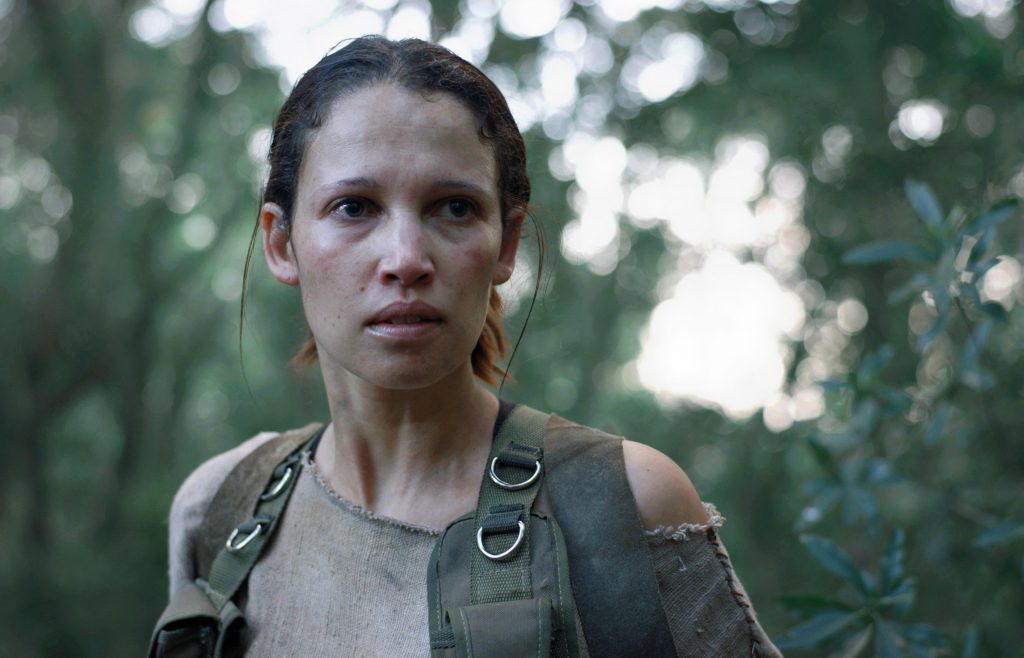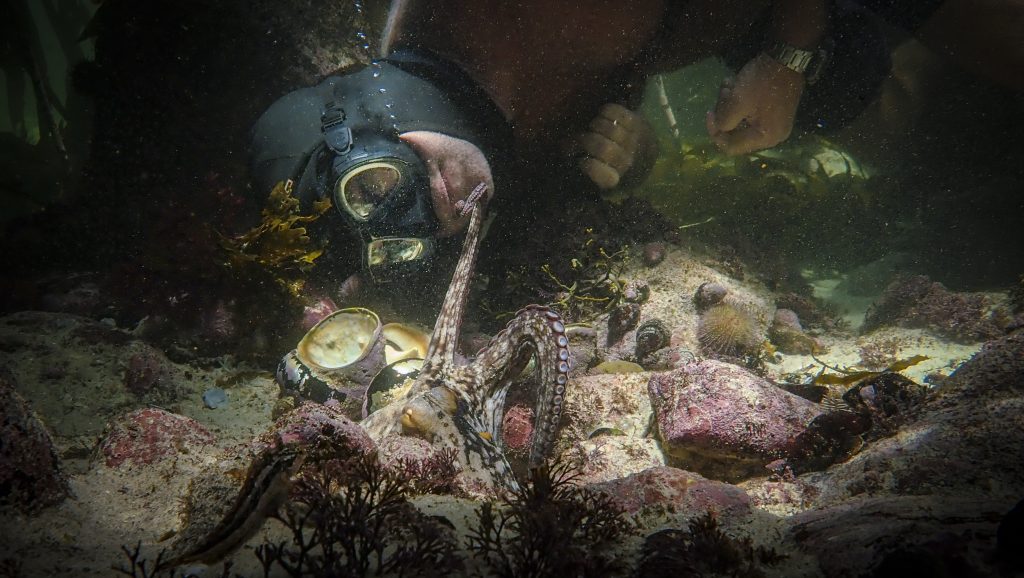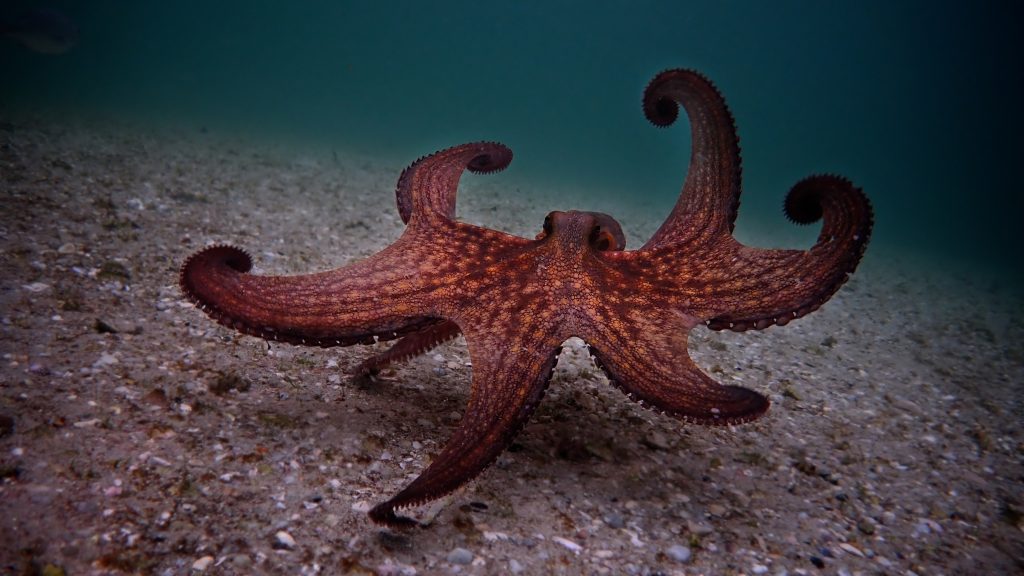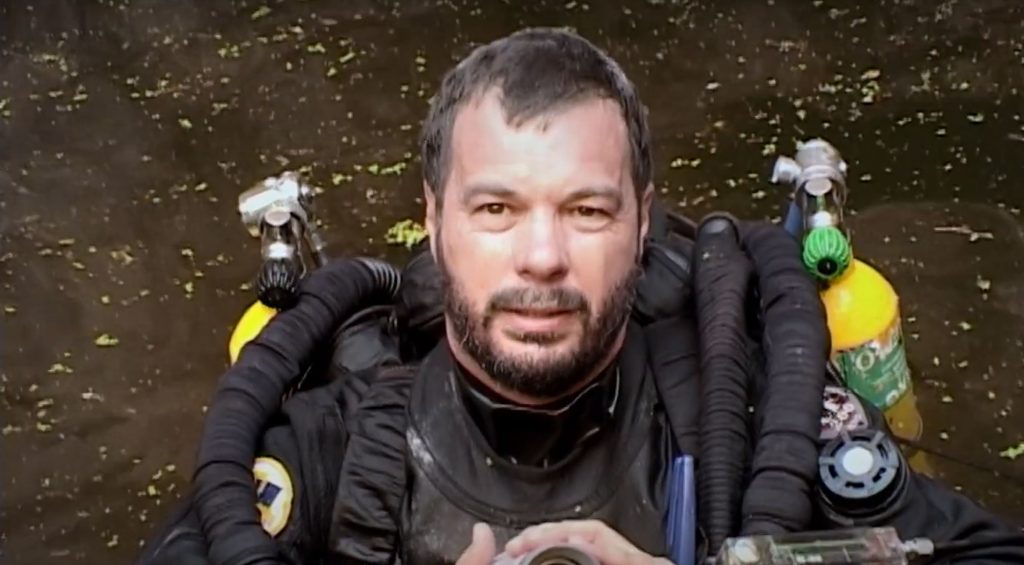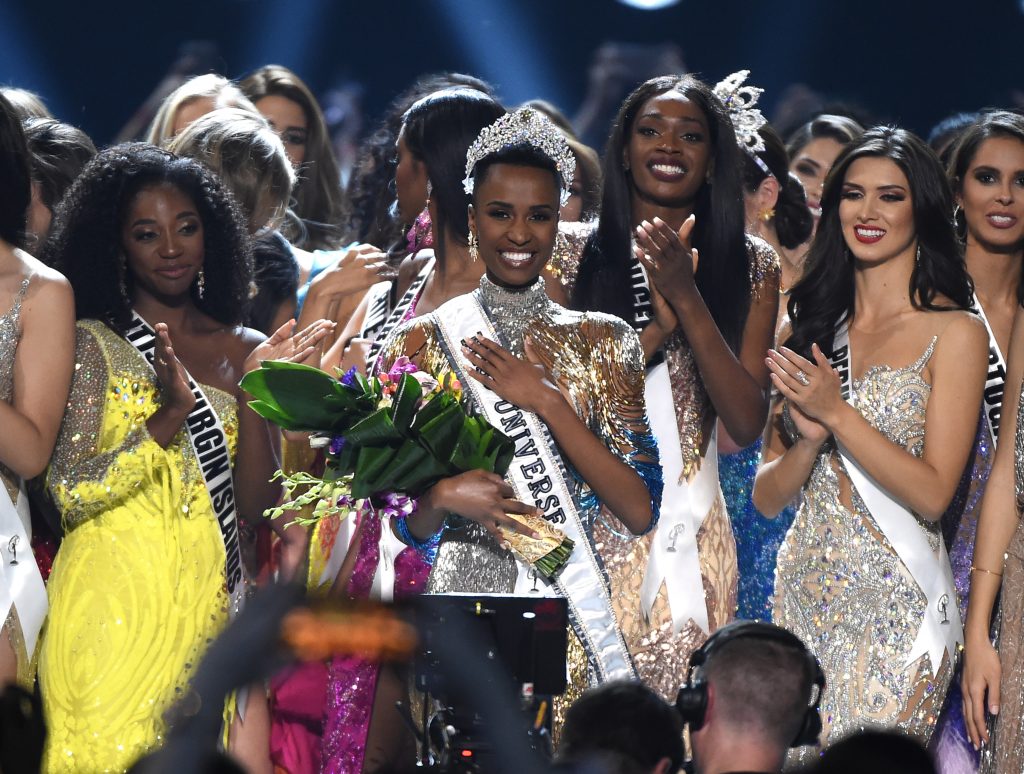August 18, 2022
by Carla Hay

Directed by Baltasar Kormákur
Some language in Tshivenda with subtitles
Culture Representation: Taking place in South Africa, the horror movie “Beast” features a predominantly black cast of characters (with some white people) representing the working-class and middle-class.
Culture Clash: A British single father, who’s a medical doctor, goes on a safari in South Africa to reconnect with his two estranged, underage American daughters, and they encounter a lion on a rampage.
Culture Audience: “Beast” will appeal primarily to people who are fans of star Idris Elba and formulaic horror movies about murderous animals on the loose.

As a horror story about a killer lion on the loose, “Beast” is tame, predictable and often ridiculous. Disney’s 1994 animated film “The Lion King” has more suspense than the formulaic junk of “Beast.” Viewers who want to watch a movie with no imagination, terribly staged action scenes and some laughably bad dialogue will probably enjoy “Beast” a lot more than people who are looking for better-quality entertainment, considering the talented cast members who star in this movie.
Directed by Baltasar Kormákur and written by Ryan Engle, “Beast” used computer-generated imagery (CGI) visual effects for the rampaging lion that causes terror in the story. And these visual effects are obvious, because the lion looks very fake. The movie has multiple action sequences where a human kicks the lion, and the lion unrealistically backs off instead of mauling the person to death, which is what would happen in real life.
In another part of the “Beast,” a severely injured person who would be unconscious from medical shock and extreme loss of blood is able to sit up and talk like a normal, healthy human being. The movie is just scene after sloppily edited scene of hard-to-believe nonsense. And to top it all off, viewers are supposed to believe that this rampaging lion does things that are against a lion’s nature because the lion has a human-like revenge plan.
“Beast” also has an over-used formula that’s often in derivative movies about families who experience terror on an adventure trip: tension-filled parent-child relationships. In “Beast,” Dr. Nate Samuels (played by Idris Elba) is a medical doctor and a British immigrant who has been living in the United States for an untold number of years. Nate was separated from his wife Amahle (played by Naledi Mogadime), a South African native, when she died of cancer. The movie never says how long Amahle (who’s briefly seen in Nate’s dream sequences) has been deceased, but conversations indicate that she died less than a year before the story takes place.
Nate and Amahle (who was a photographer) met in South Africa. At some point in their relationship, they moved to the United States, where their two daughters were born and raised. The two daughters have opposite personalities. Meredith “Mare” Samuels (played by Iyana Halley) is 18 years old, moody and withdrawn. Norah Samuels (played by Leah Jeffries) is 13 years old, bubbly and talkative. Mare wants to be a photographer, just like her mother was. Norah hasn’t decided what she wants to do with her life when she’s adult, but she mentions at one point, when she’s asked, that she’s thinking about going into psychology to become a family therapist.
It might be Norah’s subconscious way of saying that her own family needs therapy. In a few guilt-ridden monologues in the movie, Nate reveals that his workaholic ways made him a mostly inattentive father before Amahle died. He also blames himself for not seeing the early signs that she had cancer.
Mare (who doesn’t want to be called Meredith) has more bitter feelings toward Nate than Norah does. Mare is especially angry that Nate had downplayed Amahle’s cancer. It’s mentioned that Nate even went as far as promising his daughters that Amahle would be okay and would recover. And that was a promise he couldn’t keep.
As a way to reconnect with his daughters, Nate has taken Mare and Norah a trip to South Africa, to go to the places where Amahle loved. It’s a trip that he promised to Mare and Norah long ago, but he feels that the trip is more urgent now that Amahle has passed away. One of the places where Nate wants to take Mare and Norah is the wildlife preserve where he and Amahle had some fond memories.
The preserve is the home and workplace of wildlife biologist Martin Battles (played by Sharlto Copley), a longtime friend of Nate’s. Martin (who is a never-married bachelor) was the one who introduced Nate to Amahle. Martin, who is also a passionate anti-poacher, is disturbed that poachers have been killing animals on the preserve and have recently been going after lions. (“Beast” was filmed on location in South Africa—specifically in Limpopo province, Northern Cape province and Cape Town.)
The opening scene of “Beast” shows one of these poacher hunts on the preserve at night. Viewers later find out that the poacher’s leader is a generic villain named Kees (played by Martin Munro), who goes with a group of native South Africans for these illegal hunting activities. In this opening scene, the killer lion goes on the attack. Later, it’s shown that the lion has gone on a rampage and killed several local villagers who have nothing do to with the poachers.
Why is this lion attacking every human in sight? It’s against a lion’s nature to attack, unless it’s to eat or in self-defense from being provoked. The lion is killing people but not eating them. Martin, who is the safari guide for the Samuels family, suddenly acts like a lion psychologist, and announces that the lion must be out for revenge because the poachers killed members of the lion’s pride.
You can easily guess the rest of what happens in this movie. And sure enough: Nate, Mare, and Norah find themselves trapped in a Jeep after the lion suddenly attacks them in the vehicle. Mare takes the wheel of the car, crashes it in a state of panic, and the vehicle is then unable to start. Meanwhile, Martin, who has been communicating with them by walkie talkie, tells the family that he’s been attacked by the lion. The attack has resulted in Martin’s right leg being severely injured, and he’s losing a critical amount of blood that could soon lead to his death if he doesn’t get medical help.
The rest of “Beast” is an unsurprising back-and-forth battle between the lion and the humans. The people who die and survive are exactly whom you think will die and survive. Although “Beast” has some stunning landscape cinematography, and the cast members give adequate performances, all of it is not enough to overcome the idiotic things that happen in this substandard movie.
In the production notes for “Beast,” producer Will Packer said he wanted to make “Beast” like “‘Cujo’ with a lion.” The 1983 horror film “Cujo,” which is based on Stephen King’s 1981 novel of the same name, is about a woman trapped in a car with her son while a rabid St. Bernard named Cujo is nearby. Considering that the “Cujo” movie failed to impress enough movie audiences and critics to be a major hit, that’s all you need to know about how low the standards are for “Beast.”
Universal Pictures will release “Beast” in U.S. cinemas on August 19, 2022.


